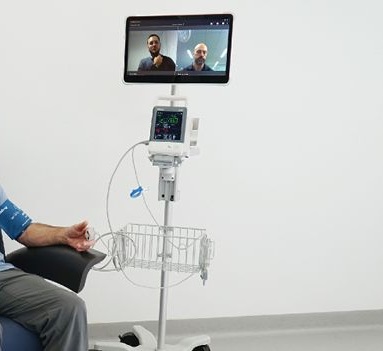
As hospitals and clinics become more digitally connected, medical-grade tablets are stepping in as a vital tool in patient care. Clinicians rely more on the mobility, clarity, and efficiency of these flexible mounted to handheld devices to deliver timely and compassionate care. However, the true value of these tablets shines brightest when paired with medical carts and real-time translation services, making healthcare faster and more inclusive.
Let’s explore how medical tablets are transforming patient experience, reducing errors, and helping bridge communication gaps in healthcare settings.
Why Medical Tablets Are the Heart of Mobile Healthcare
Medical tablets aren’t just ordinary tablets with a durable case slapped on. They are purpose-built to withstand the demands of clinical settings, with features designed specifically for use at the point of care.
Key features of medical-grade tablets include:
- Antimicrobial Casing: Medical tablets come with medical-grade, easy-to-disinfect enclosures that help prevent the spread of infections.
- Hot-Swappable Batteries: No need to power down the device to change a battery—a huge plus in emergency care or long shifts.
- Bright, Glove-Friendly Touchscreens: High-resolution displays that respond to touch even when users are wearing gloves.
- Integrated Barcode/RFID Scanners: For accurate medication administration and patient identification.
- Built-in Cameras and Microphones: Essential for telehealth, remote consultations, or capturing wound images and progress photos.
- Secure Connectivity Options: Wi-Fi 6, BT wireless communication, and optional 4G/5G help maintain a strong connection with hospital networks and EHR systems.
- HIPAA-Compliant Data Protection: Including TPM (Trusted Platform Module) support, secure login, and optional smart card readers.
With these features, nurses, physicians, and care teams can document patient records at the bedside, administer medication safely, and connect with remote specialists, all while maintaining infection control standards.
The Power of the Bundle: Medical Tablets and Medical Carts
Medical tablets can be transformed into a complete mobile workstation when mounted on a maneuverable medical cart, also known as a workstation on wheels. Suddenly, the tablet becomes a complete mobile workstation, ideal for navigating tight spaces like crowded ERs or small patient rooms.
How Tablets and Carts Work Better Together in Healthcare
- Hands-Free Workflow: With an adjustable mount, clinicians can use the tablet without having to hold it, ideal for procedures or sterile environments.
- All-Day Operation: Medical carts can come with power supply systems, giving your hot-swappable tablet batteries backup when you need it most.
- Extra Storage: Many carts include drawers or baskets to carry medications, supplies, or paperwork, reducing trips back and forth from nurse stations.
- Improved Ergonomics: Adjustable height and tilt make it easy for staff of all sizes to work comfortably, reducing strain and fatigue.
- Dedicated Roles: Carts can be assigned for medication administration, charting, or patient intake, making it easier to keep workflows consistent and organized.
Rugged medical tablet with a light slim medical cart equips clinicians with a flexible, all-in-one workstation that travels with them and adapts to each patient’s needs.
Breaking Down Language Barriers with Integrated Translation Services
Even the most advanced tools can fall short if language or hearing loss remains a barrier between provider and patient. That’s where translation service groups—especially those offering real-time interpretation in both spoken languages and sign language—can make a life-changing difference.
Medical tablets, with their built-in webcams, microphones, and strong network connections, are ideal platforms for integrating interpretation services.
Boosting Clarity and Compassion in Care with Language-Ready Tablets
- Instant Access to Qualified Interpreters: With one tap, staff can launch a secure video or audio call to a certified medical interpreter in several languages.
- Support for Sign Language: Deaf and hard-of-hearing patients can connect via the tablet’s camera to a sign language interpreter, ensuring clarity in critical communications like consent forms or discharge instructions.
- Better Patient Understanding: Studies show that patients who understand their care plan are more likely to comply with medications and follow-ups. This reduces readmissions and improves outcomes.
- Reduced Legal and Ethical Risk: Miscommunication can lead to incorrect diagnoses, medical errors, or lawsuits. Interpretation services help prevent these problems before they occur.
- Increased Patient Satisfaction: Patients feel more respected and included when they can speak their native language or use sign language or interpretation without delay.
The modern healthcare environment is complex. But solutions don’t have to be. Pairing medical-grade tablets, mobile carts, and language interpretation services creates a powerful trifecta that addresses care quality, infection control, staff efficiency, and patient accessibility and inclusivity—all in one go.

